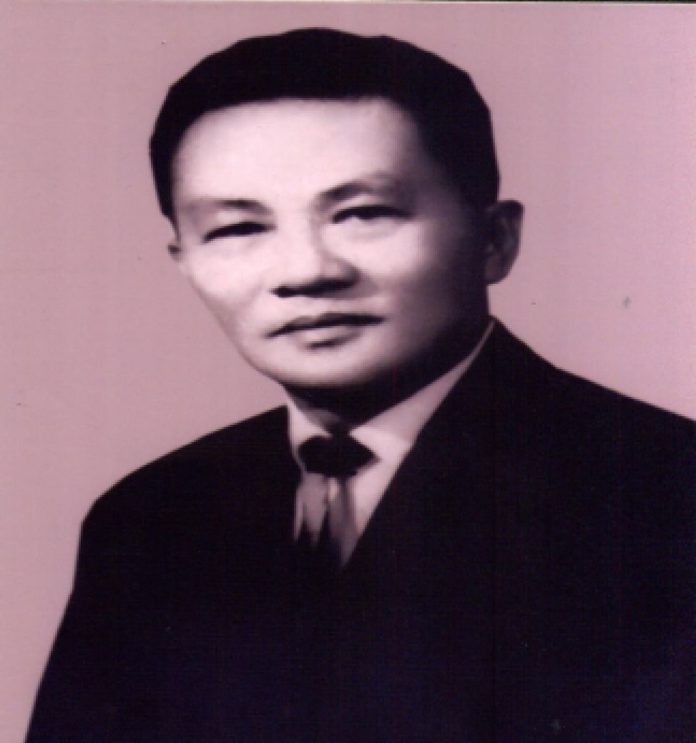WHEN HILIGAYNON novelist Ramon Muzones was named posthumously last October as National Artist for Literature, many expressed ignorance about his works despite his legendary prolific writing career.
According to UST English literature alumna and Hiligaynon literature scholar Ma. Cecilia Locsin-Nava, Muzones wrote more than 60 novels, most of them serialized in Hiligaynon magazine and other regional publications where they were avidly read by thousands.
Locsin-Nava, who received recently the 2019 Parangal Hagbong for lifetime achievement in Thomasian letters from the Varsitarian largely on the strength of her scholarly writings that catapulted Muzones’ regional writing to national regard, has herself translated some of the Panay writer’s work.
A recent forum at the Ateneo de Manila University focused on Muzones’ “Margosatubig,” whose translation in English by Locsin-Nava has been published by the ADMU Press. Noted for its “aggregative” storytelling style and rich historical narratives that remain relevant up to this day, Locsin-Nava said Margosatubig may be a good introduction to the Ramon Muzones ouevre.
“Margosatubig” remains Muzones’ most important work because “it is necessary fiction,” Nava said during the book discussion last April 11 at the Leong Hall Auditorium of ADMU.
“Margosatubig,” published in 1946, shows a mythopoeic imagining of the Philippine nation and its struggle for independence by telling the story of fictional city Margosatubig, a Muslim sultanate kingdom of Maguindanao and Sulu whose leadership is highly contested, and its savior and rightful heir named Salagunting.
“It’s a paradigm for historic imagining — the ideal nation. Muzones has always that reformist bend of mind, an idealist, who would sought in terms of what would constitute a good society, what would constitute a good leader,” Nava later told the Varsitarian.
Locsin-Nava said that Muzones is the first regional writer recognized as National Artist for Literature, given that his fiction and historical research were focused in some regions—Iloilo, Panay and Negros—and written in regional language.
“[Muzones] ushered the radical shift in the development of Hiligaynon literature from the expository or storytelling technique associated to the Spanish tradition and the writers of the old school to the dramatic showing narrative technique… thus ushering modernism,” she said.
The novel employed an “aggregative” narrative structure that emphasized the quality of the country’s dialects and its ethnic structure that could enrich future Filipino novels, said Alvin Yapan, a writer and filmmaker.
“More than the allusions, it’s the structure of the novel. I’m referring to the quality of Muzones’s narrative in his novels that utilize aggregative [dialogues] and layering which also reflects the quality of the country’s language,” Yapan said.
The narrative style was complemented by the “efflorescence” method or a literary technique where a story branches or blooms from an original story.
“The plot and scenes [in the novel] are not linear. In this type of narrative, what is realistic is not the basis of its [quality] or beauty, it is the narrative’s capacity to create several events from an original source,” he said.
Parallels in today’s society
Genevieve Asenjo, chair of De La Salle University’s literature department, praised the novel for its relevance in contemporary society.
“How do we read Muzones nowadays? Not from the past, or in the context of his era, but in the present, in the context of our modern-day readers. [Muzones] may be one of the foreshadowed, foretold, prefigured in the events of the past,” Asenjo said.
She also praised the novel for its rich discussion on the relationship between Christians and Muslims.
“[W]riting historical literature and narrating it from today’s lens while anticipating the future makes the reading of Muzones’s [works] relevant – an eye for an eye [and lessons] for what should no longer be practiced in today’s society,” she said.
Yapan echoed Asenjo, as the novel shows a parallelism with societal problems and issues that the country still faces today.
“Muzones’s novel can be read as a comparison for order or balance. We can also read the novel as a projection of societal problems,” Yapan said. “The power of the story as an aesthetic category in trying to resolve what seemed to be unending conflicts, which sprung from the characters’ refusal to follow the law, is manifested.”
Luna Sicat-Cleto, a creative writing professor at the University of the Philippines Diliman, described the novel as an “outsider’s rendition” of Muslims.
“No matter what we say about Muzones’s brilliant imagination, the Moro’s problem as an ostracized part of our society still exists,” Sicat-Cleto said.
Regional literature ‘important’
Locsin-Nava urged literary scholars to also research and translate regional writers.
“I hope more regional writers will win. How can you win if nobody is going to write about you? What do you do if your subject does not want to be written about?” she said.
Muzones should also be read by young Filipinos to have “multiplicity of models.”
“When we talk of Philippine literature, [it] is usually Tagalog and National Capital Region but 70 percent of us live in the provinces. [There are other writers] outside the NCR to talk about and are worth reading,” she said.
“We should not only know the literature of the private region but also the literature of those people in the provinces,” she added.
The event, titled “Manila Reads Muzones: Pambansang Alagad ng Sining para sa Panitikan,” was organized by the National Commission on the Culture and the Arts, Komisyon sa Wikang Filipino, National Book Development Board, Ateneo Institute of Literary Arts and Practices and the Unyon ng mga Manunulat sa Pilipinas.
Editor’s Note: We would like to clarify that the accompanying photo of the same article published in the Varsitarian’s April issue is that of National Artist for Literature Resil Mojares. Instead of attaching the photo of National Artist for Literature Ramon Muzones, the editor inadvertently attached the wrong photo. We sincerely apologize for the mistake.














